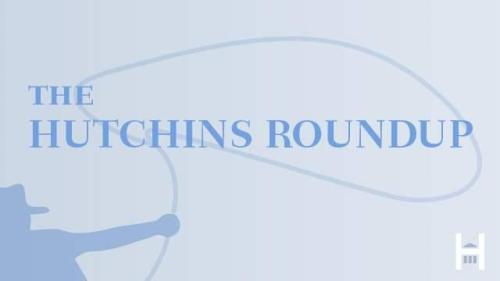Studies in this week’s Hutchins Roundup find that housing speculation during the 2000s led to more dramatic economic swings, government-funded defense R&D raises private innovation and productivity and more.
Want to receive the Hutchins Roundup as an email? Sign up here to get it in your inbox every Thursday.
Housing speculation led to more dramatic economic swings
How important was housing speculation in the boom and bust cycle of the 2000s? Using variation in state capital gains taxes to isolate the causal impact of housing speculation, Zhenyu Gao of Chinese University of Hong Kong, Michael Sockin of UT Austin McCombs School of Business, and Wei Xiong of Princeton University find that areas with greater housing speculation, as measured by the fraction of houses purchased that weren’t owner-occupied, experienced greater swings in house prices, employment, payroll, per capita income, and the number of business establishments. For example, a 10% increase in the share of houses purchased by people who didn’t live in them led to a 13% increase in payroll during the boom (2004-2006), and a 15% drop during the bust (2007-2010). The authors find that housing speculation transmits to the local economy by affecting both construction employment and local household demand.
Government-funded defense R&D raises private innovation and productivity
Enrico Moretti of University of California at Berkeley and Claudia Steinwender and John Van Reenen of MIT find that government-funded defense R&D (which accounts for nearly 60% of all U.S. government R&D) leads to (or, as they put it, “crowds in”) more private R&D. Using industry-level data from OECD countries and firm-level data from France, they find that a 10% increase in government-funded R&D leads to a 4.3% increase in privately funded R&D. The effects of an increase in public R&D within an industry also has positive spillover effects across countries; increases in government-funded R&D in one industry in one country raises private R&D spending for that same industry in another country. Furthermore, the resulting increases in private R&D yield significant growth in productivity. Although their results point to public R&D as an efficient tool to increase private innovation and productivity, the authors caution that they have not examined whether the benefits of public R&D outweigh the costs.
Benefits of temporary price level targeting limited by time it takes public to understand the change
The persistent undershooting of inflation has led policymakers to explore switching to price-level targeting during a recession, at least temporarily. Price-level targeting aims to offset past misses of inflation from its long-run target, which could stimulate the economy by a central bank commitment to keep nominal interest rates lower for longer. Martin Bodenstein, James Hebden and Fabian Winkler of the Federal Reserve Board find that the benefits from switching to a price-level targeting strategy during a recession are limited. It takes time for people to learn about a new strategy, they say, so initially people are unlikely to realize that the new policy is more accommodative. They find that output and inflation would fall by just as much under a price-level targeting strategy as under the Fed’s current inflation-targeting strategy. The authors conclude that permanent price-level targeting strategies are likely to be much more effective than temporary ones.
 Source: National Bank of Canada
Source: National Bank of Canada
“[A]t least one component of what we saw in the middle of September was this sense that we are getting to our level of scarce reserves. Reserves were not sufficient to keep that liquidity in the market, to keep interest rates well within the range. As we’ve added continuously [to them] ever since then, we’ve seen interest rates be pretty stable and right in the range that we were looking for. […] We’re very focused on end of the year. We know that money market stresses do tend to spike at the very end of the year. And we’ve seen that in many previous years. You know, we have announced I think both clearly and in a clear and predictable approach from us at the New York Fed, about providing liquidity in through and over the end of the year in terms of overnight and term repo. And I think that has helped a lot, not just adding the reserves, but giving market participants confidence that those reserves are available now. Liquidity is available now and it will be available through January and on. So I think things seem to be looking very good. And I think we’ve achieved those goals. The broader question though, is $1.4 or $1.5 trillion of reserves [enough], that’s an enormous amount of reserves?” says John Williams, President of the Federal Reserve Bank of New York
“[T]here is a lot of work going on at the Fed, I’m sure we’ll be working with our other regulatory partners and thinking through the various institutional, regulatory and other you know, pieces of that puzzle to both understand, A) Why is demand for reserves so high, and B) why did it seem like the reserves didn’t flow between institutions as freely as you might have expected, given how high repo rates were at the time?”











Commentary
Hutchins Roundup: Housing speculation, government-funded R&D, and more
November 21, 2019